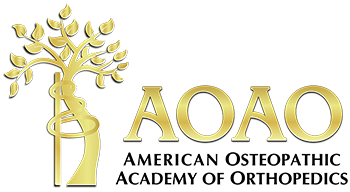- Oakk Wynn OMS-II – Kettering Health / Ohio University Heritage College of Osteopathic Medicine
- Logan Bushnell DO – Kettering Health
- H. Brent Bamberger DO – Kettering Health
Abstract
Flexor digitorum profundus tendon avulsions (Jersey Finger Injury) are common in adults, but not common in pediatrics. During the pandemic of COVID-19, a 14-year-old male sustained a left ring finger injury. Due to the nature of tele-health, the physical exam was not sufficient from home and nothing notable on x-rays. With the collaboration with the athletic trainer, a pediatric jersey finger injury was suspected and confirmed.
Keywords: Jersey Finger Injury, pediatrics, collaboration, tele-health.
Introduction
Flexor digitorum profundus (FDP) tendon avulsions (Jersey Finger Injury), are a recognized injury in hand surgery. They are most commonly associated with adult injuries with forced hyperextension of the distal phalanx against forced flexion of the finger. There are notable differences between the pediatric and the adult skeleton, and one of the major differences is the presence of physis (growth plates) and the strength to failure of a growth plate compared to healthy adult bone1,2. Interestingly, this tendon avulsion injury is less commonly seen in the pediatric population in which the physis (growth plate) is still open. This case displays the importance of in-person clinical visits especially in the Orthopedic specialty. Telemedicine is an effective tool in the field of orthopedics, especially post operatively3. Although telemedicine is a very effective tool, there are still limitations. There are limitations for telehealth examinations involving the wrist, such as distal radial ulnar joint instability and acute tendon lacerations4. In this case involving the FDP avulsion, a telehealth visit was not sufficient. Without collaboration from the athletic trainer, this injury could have been missed. A skeletally immature patient sustained an acute avulsion injury of the flexor digitorum profundus, instead of a fracture to the physis (growth plate).
Case Description
A 14-year-old male sustained a left ring finger injury while playing football for the local high school during a time of global pandemic (COVID-19). The first encounter was via tele-health, in which the patient’s physical exam was altered and was unable to be performed with experience and standards. Symptoms were vague on examination with pain being the main complaint, negative x-rays, and no injury was noted immediately. Sports were continued but no improvement occurred, and the athletic trainer reached out to the attending doctor, discussing the concern for FDP tendon injury. The athletic trainer was well integrated into the care for the patient, and has a good relationship with the attending, treating many patients prior. Immediate surgical intervention was performed, and the suspected Jersey Finger injury was confirmed. There was no bony involvement, no fracture of the physis (growth plate), and a primary repair was performed with direct tendon reinsertion with suture button. The post-operative protocol consisting of early active range of motion with progressive hand therapy was started immediately. After two months of follow up the patient regained return of function of the ring finger and was determined to be well healed and treatment was finalized.
Results
Figure A: The left hand is surgically explored and the flexor digitorum profundus tendon to the ring finger was found retracted into the palm at the level of the A1 pulley near the volar plate of the metacarpal phalangeal point.
Figure B: The final photo intraoperatively which shows the primary repair and suture button fixation, you can see the correct amount of tension is difficult to determine but intraoperative expert opinion of attending on the case was utilized.
Figure C: Preoperative clinical AP radiograph of the ring finger that shows skeletal immaturity, with no evidence of fracture or sign of physeal fracture.
Figure D: Preoperative clinical lateral radiograph of the ring finger, skeletal immaturity, again with no evidence of fracture or sign of physeal fracture.
Discussion
COVID-19 has pushed providers for tele-health consultations; in orthopedics it has been promoted for post operative examination and simple fracture consultation3. In this case, the initial injury was missed on tele-health examination, likely showing some limitations to at home examinations. This case could highlight a limitation to the telehealth examination, especially after an injury. The athletic trainer’s knowledge of potential Jersey Finger injury was ultimately the diagnostic tool utilized to move toward surgery. The collaboration and teamwork of the athletic trainer and the orthopedic hand surgeon was imperative during this case. Although rare to have a pediatric Jersey Finger injury, this patient sustained a soft tissue avulsion of the FDP to the ring finger, and no involvement with the physis (growth plate). It is expected that any force placed on the flexor tendon of the finger would cause fracture or involvement of the physis as the growth plate is 2-5 times weaker than the soft tissues surrounding them4. A strict soft tissue avulsion can be encountered when evaluating a pediatric hand patient with vague symptoms and cannot be missed.
Figure E: This image shows the relationship of the distal phalanx and extrinsic flexor and extensor tendons and the attachments in relation to the physis.
Summary
A rare soft tissue only avulsion of the FDP tendon with retraction in a pediatric patient, without growth plate involvement. It highlighted the challenges of tele-health visits for complex (rare) injuries. Proved importance of athletic trainers being involved with direct patient care and being a part of sports medicine team.
Conclusion
Pediatric Jersey Finger injuries are uncommon and even more difficult to diagnose from a tele-health setting. With integrated help from multiple team members, including athletic trainers, direct patient care and diagnoses can be improved.
References
- Perron AD, Miller M, Brady WJ. Orthopedic pitfalls in the emergency department: Pediatric growth plate injuries. AM J Emerg Med 2002: 20:54-57.
- McQuillien K. Musculoskeletal Disorders. In : Marx JA< Hockberger RS, Walls RM, eds. Rosen’s Emergency Medicine. Philadelphia, PA Mosby; 2006: 2689-2692.
- Petersen W, Karpinski K, Backhaus L, Bierke S, Häner M. A systematic review about telemedicine in orthopedics. Arch Orthop Trauma Surg. 2021 Oct;141(10):1731-1739. doi: 10.1007/s00402-021-03788-1. Epub 2021 Feb 26. PMID: 33635399; PMCID: PMC7907664.
- Wright-Chisem J, Trehan S. The Hand and Wrist Examination for Video Telehealth Encounters. HSS J. 2021 Feb;17(1):70-74. doi: 10.1177/1556331620975341. Epub 2021 Feb 21. PMID: 33967645; PMCID: PMC8077990.
- Foni NO, Costa LAV, Velloso LMR, Pedrotti CHS. Telemedicine: Is it a tool for Orthopedics?. Curr Rev Musculoskelet Med. 2020; 13(6):797-801. Doi:10.1007/s12178-020-09680-6.
- Larson RL. Epiphyseal Injuries in the adolescent athlete. Orthop Clin North Am. 1973 Jul;4(3):839-51. PMID: 4783900.
Required Disclosures and Declaration
Copyright Information: No Copyright Information Added
IRB Approval Information: Yes
Disclosure Information: No known conflicts of interest


